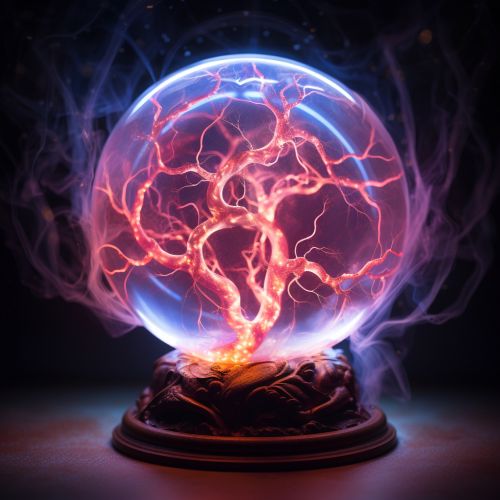Plasma (physics)
Introduction
Plasma, in the context of physics, is one of the four fundamental states of matter, the others being solid, liquid, and gas. It is an ionized gas consisting of positive ions and free electrons in proportions resulting in more or less no overall electric charge, typically at low pressures (as in the upper atmosphere and in fluorescent lamps) or at very high temperatures (as in stars and nuclear fusion reactors).
Characteristics of Plasma
Plasma is often referred to as the "fourth state of matter" because its properties are significantly different from those of solids, liquids, and gases. While it is a type of gas, its components are charged particles, which gives it unique characteristics.


Plasma is composed of a collection of free-moving electrons and ions - atoms that have lost electrons. Energy is needed to strip electrons from atoms to make plasma. The energy can be of various origins: thermal, electrical, or light (ultraviolet light or intense visible light from a laser). With sufficient energy, the electron is freed from the nucleus, leaving behind a positively charged ion.
Properties of Plasma
Plasma has unique properties that distinguish it from other states of matter. Plasmas are very good conductors of electricity and are affected by magnetic fields. For instance, the solar wind is a stream of plasma ejected from the sun that travels through space and can interact with the Earth's magnetosphere, causing phenomena such as the Northern Lights.
Plasma temperatures and densities range from relatively cool and low density (like the ionosphere) to very hot and high density (like the center of a star). Old stars, young stars, the tails of comets, and active galactic nuclei contain plasma.
Creation of Plasma
Plasma can be created by heating a gas or subjecting it to a strong electromagnetic field to the point an ionized gaseous substance becomes increasingly electrically conductive, and long-range electromagnetic fields dominate the behaviour of the matter.
Plasma and ionized gases have properties and display behaviours unlike those of the other states, and the transition between them is mostly a matter of nomenclature and subject to interpretation. Based on the surrounding environmental temperature and density, partially ionized or fully ionized forms of plasma may be produced.
Plasma in Nature
Plasma is the most common state of matter in the universe. It can be found in a wide range of places, from flames and lightning on Earth to the spaces between stars in the galaxies.
The sun and other stars are composed of plasma, and even space itself contains a sparse plasma, albeit one so spread out that it can usually be ignored.
Plasma in Technology
Plasma technology has a wide range of applications in various fields. In industry, plasma is used for surface treatment, in microchip etching, and in plasma cutting. Plasma lamps are a type of gas discharge lamp energized by radio frequency (RF) power.
In medicine, cold atmospheric pressure plasma is used for sterilization of surgical instruments and other medical equipment. In recent years, plasma medicine has emerged as a new field that studies the application of plasmas in therapeutic applications such as cancer treatment and wound healing.
